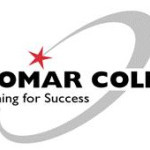- Industry: Education
- Number of terms: 12355
- Number of blossaries: 0
- Company Profile:
Founded in 1946, Palomar College is a public two-year community college in the city of San Marcos, located in north San Diego County, California. Palomar offers over 300 associate degree, certificate programs and is designated by the U.S. Department of Education as an Hispanic-Serving Institution ...
Unusually elevated core body temperature resulting from fever or prolonged exposure to a hot environment. This can be a life threatening condition. See hypothermia.
Industry:Anthropology
The yellow-red pigment of human bile. Small amounts of it are normally found in blood and urine. At high bilirubin levels, blood and urine change color and the skin becomes yellow or jaundiced. This is one of the symptoms of mismatched blood transfusions and mother-fetus incompatibility in blood type.
Industry:Anthropology
The study of population characteristics, especially its size, density, and growth patterns.
Industry:Anthropology
The species of humans that followed Homo habilis and preceded Homo sapiens in our line of evolution. Homo erectus evolved in East Africa by 1. 8 million years ago. They were the first humans to expand their range into Asia and Europe. By at least 400,000 years ago or even earlier in some areas, they were beginning a transitional evolutionary phase that would eventually lead to archaic humans. See Homo ergaster and Homo heidelbergensis.
Industry:Anthropology
They exist in variable numbers and types but make up a very small part of human blood volume. Some leukocytes (i. E. , lymphocytes) provide a physiological defense against infection. As a result, their numbers increase when the body is under attack by bacteria and viruses. Some other types of leukocytes (i. E. , macrophages ) have the function of getting rid of old unneeded blood cells.
Industry:Anthropology
The simple cell division process that occurs in somatic cells. One cell divides into two offspring cells that are identical to each other in their chromosome complement. Mitosis produces cells with diploid numbers of chromosomes--46 in the case of humans. See meiosis.
Industry:Anthropology
The release of a secondary oöcyte from an ovary to begin its path down a fallopian tube (or oviduct) to the uterus.
Industry:Anthropology
The relatively large red cells in blood that transport oxygen from the lungs to all of the living tissues of the body. Normally, 40-45% of human blood volume consists of erythrocytes.
Industry:Anthropology
A research instrument primarily used in physics to accelerate streams of charged subnuclear particles to high velocities in order to sort and analyze them. This technique is now also used to count carbon isotope atoms for radiocarbon dating. The advantage of this technique over the conventional radiocarbon method is that it requires a far smaller sample size and can potentially provide dates going back to around 100,000 B. P. At present, however, AMS dates generally are for events less than 60,000 years old.
Industry:Anthropology
A relative dating method based on the fact that artifact types change through time in frequency as a result of new technologies, styles, and available construction materials. The frequency of artifact types in a stratum can be compared to known frequency changes previously recorded for an ancient culture. In this way, the stratum can be dated relative to other strata or sites. When a seriation sequence has been cross-calibrated with reliable chronometric dating methods, it can be considered a calibrated relative technique.
Industry:Anthropology
